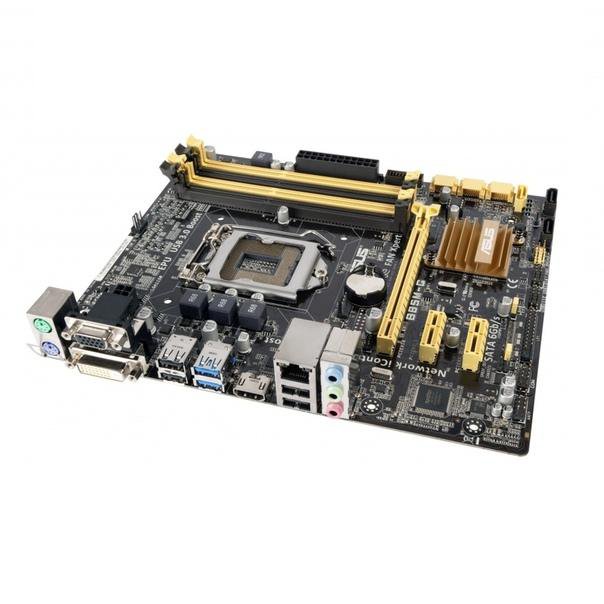How to Tell if RAM will Work with Your Motherboard?
The easiest way to tell if a certain RAM stick will work with your motherboard or not is to look at the motherboard specifications. This should give the details regarding the type, amount and the RAM characteristics that the motherboard can support.
It should be noted that as far as the RAM type is concerned, i.e DDR 2, DDR 3 and DDR 4, a motherboard is not NOT backwards compatible. Meaning you cannot install a DDR4 RAM on a motherboard that is designed to support DDR3 RAM and vice versa.
However, as far as the frequency and CAS latency goes, the RAM sticks ARE backward compatible. Meaning a DDR4 RAM stick with a frequency of 3200 MHz CAN work on a motherboard that is designed to support a max frequency of 3000 MHz.
In the following text, we will look different ways on how to tell if RAM will work with your motherboard or not.
We will also talk about how to tell the specifications of the RAM stick in your hand.
TABLE OF CONTENTS
How to Tell If RAM Will Work With Your Motherboard?
There are two important points to consider when figuring out if the RAM stick will work with your motherboard or not.
- Figure out the memory specifications of your motherboard
- Identifying the RAM STICK specifications
1. Figure out the Memory Specifications of Your Motherboard
From the motherboard specifications, there is a plethora of information that you can find regarding the RAM that it can support.
Head over to the specification for your motherboard online, you will find something similar to the following:
ASUS ROG STRIX Z590-E GAMING WIFI memory specifications. Source: ASUS.com
The motherboard above is a premium motherboard featuring a high end Intel Z590 chipset. It can support a DDR4 RAM sticks with super overclocked frequencies of upto 5333 MHz.
Now your motherboard may not have the same specifications. But generally, you can expect to find the following information from the motherboard technical specs:
- Type of RAM it supports
- The amount of RAM it can support
- The frequency of the RAM it can support
- Whether it can support ECC memory or not
1.
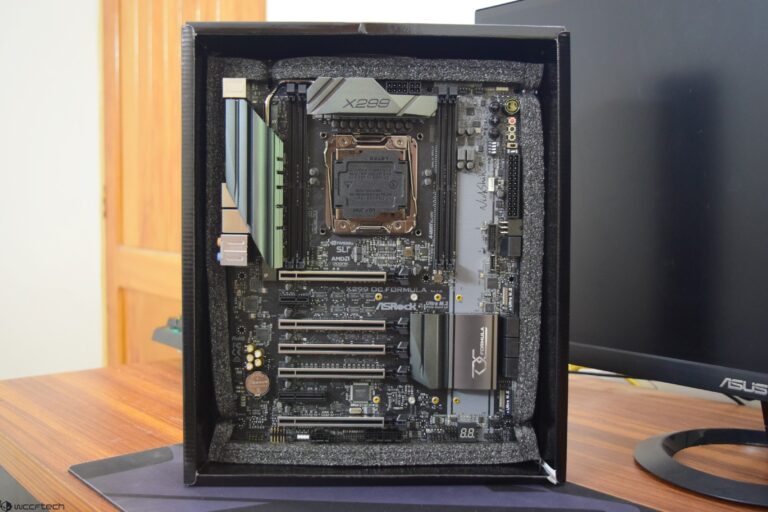 Type of RAM
Type of RAM
The latest motherboards at the moment support the DDR5 RAM. However, DDR4 is still the most common type out there. DDR stands for Double Data Rate and it is essentially a type of high bandwidth RAM.
The DDR4 version was released back in 2014 however, it became widespread starting from 2016 and onwards.
If you are using an older system, there are high chances that your motherboard would be supporting the older DDR3 or even DDR2 version.
Hence, checking the type of RAM is the first step in determining whether a RAM stick will work on your motherboard or not.
DDR is not Cross Compatible – Generations have Different Physical Profiles
As mentioned earlier, the DDR RAM generations are NOT backward compatible. This is because every generation of DDR RAM has a different circuit design, signalling voltage and even physical profile.
The notch across generations of DDR RAM is located in different places.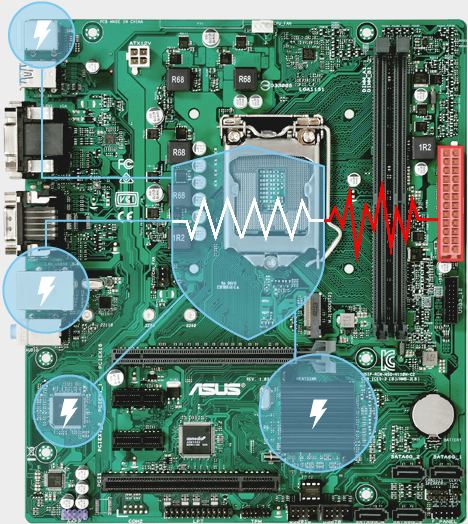 Hence, they PHYSICALLY cannot fit on motherboards not particularly designed for a certain version.
Hence, they PHYSICALLY cannot fit on motherboards not particularly designed for a certain version.
You can use the physical notches to determine what RAM stick you have.
So Can You Install DDR3 RAM on a DDR4 Motherboard?
The answer is simply no, given what is stated above regarding the fact that RAM types are not backward compatible.
Obsolete RAM Type are More Expensive
Common logic will entail that a RAM that is slower and older would cost you less. However, that is hardly the case.
This has more to do with the supply and demand factor. Older RAMs such as DDR2 or DDR1 are harder to find. As such, they are also more expensive.
If you have an older motherboard, say a motherboard that is compatible with DDR2, procuring a DDR2 stick would be more expensive than acquiring a newer DDR4 RAM stick of the same capacity.
Also Read: Why is a Motherboard Important?
2. Amount of RAM Supported by Your Motherboard – TOTAL AND PER SLOT
Another important characteristic is the amount of RAM your motherboard can support.
In the current market, you can expect to find the following max support.
- 64 GB DDR4 on budget motherboards i.e Intel H series
- 128 GB DDR4 on high end motherboards i.e Intel Z series
- 256 GB DDR4 on workstation motherboards i.e AMD TRX40 series
If you have an older budget motherboard, there are chances that it could only have a max support for 32 GB RAM.
Maximum RAM per Slot
While most builds do not come close to utilizing even the 64 GB RAM on budget motherboards, the total amount is worth noting because it TELLS YOU THE MAX SIZE OF THE RAM STICK EACH SLOT CAN SUPPORT.
So for instance, if your motherboard supports 64 GB of RAM across 4 slots, then that translates to a max amount of 16 GB per slot.
Also Read: Which Motherboards Support DDR5 RAM?
3. Determining the Frequency of the RAM Supported
The final critical RAM characteristic that you can determine from the motherboard is the clock speed that it can support.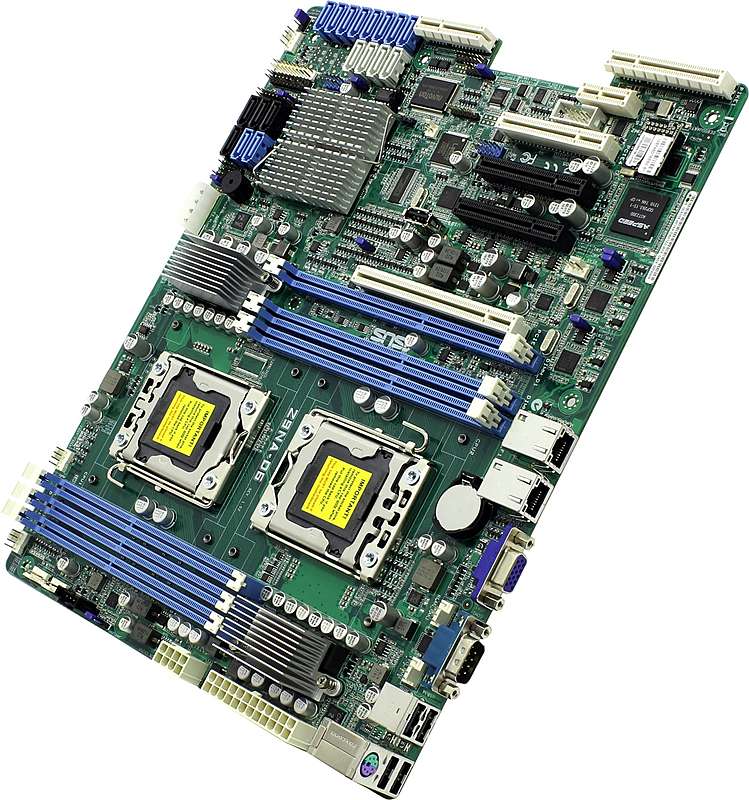
Each generation of DDR RAM has a varying range of frequency the modules can operate at. While a DDR4 RAM has a higher frequency generally than a DDR3 RAM, even DDR 4 RAMs come in different speeds within the generation.
The higher the frequency, the better is the performance. However, at the same time, the higher the frequency the more expensive is the RAM stick.
For instance, DDR4 RAM can have a frequency ranging from 2133MHz all the way to a whopping 5333 MHz (over clocked).
Enthusiasts, gamers and high performance users often opt for the high frequency RAM. However, RAM overclocking and extraordinary RAM frequencies are only supported by certain motherboards.
Take for instance the following budget Intel h410 motherboard by Gigabyte, this can support a max of only 2666 MHz RAM stick:
Gigabyte h410M D3H motherboard. Source: Gigabyte
In contrast to this, an Intel Z590 motherboard can support DDR4 RAM sticks with frequencies all the way to 5333 MHz.
ASUS ROG STRIX Z590-E GAMING WIFI memory specifications. Source: ASUS.com
RAM Frequencies are Backward Compatible
If you install a 3000 MHz DDR4 RAM on a motherboard which is designed to support a max frequency of 2666 MHz (DDR4), then it WILL work but at the slower speed of the two.
In other words, the 3000 MHz RAM will be bottlenecked by the motherboard, BUT, it will work.
Also Read: Where is Motherboard in Device Manager?
4. ECC vs Non-ECC RAM
The final, relatively important, RAM characteristic that you can find from your motherboard specs is whether it can support ECC (Error Correction Code) memory or not.
ECC RAM are expensive and specialized RAM modules that are more reliable than your average RAM sticks.
These are used in enterprise grade PCs, servers and Data Centers where there is no room for data corruption.
Most, if not all, AMD motherboards come ready with support for ECC RAM, even the budget A series motherboards do i. e Gigabyte GA-A520I-DASH.
e Gigabyte GA-A520I-DASH.
With Intel, however, ECC RAM is supported ONLY by server grade motherboard such as those featuring the C series chipset i.e C242 Gigabyte MX32-BS0.
Also Read:
- How to Check RAM Model and Brand?
- Why RAM is Called Volatile Memory?
Motherboards Often Have Labels for RAM Specifications
There are certain aspects regarding the supported RAM that you can find from physically inspecting the motherboard and reading the label.
For instance, on the following motherboard I can see that it has 4 physical slots and the version that this motherboard supports is DDR3.
Also Read: How to Check What is My Processor Architecture?
2. Identifying the RAM STICK Specifications
The other part of the equation is to determine what RAM stick you have.
Once you have identified the memory specifications for your motherboard, you will be better suited in understanding the type of RAM stick you have.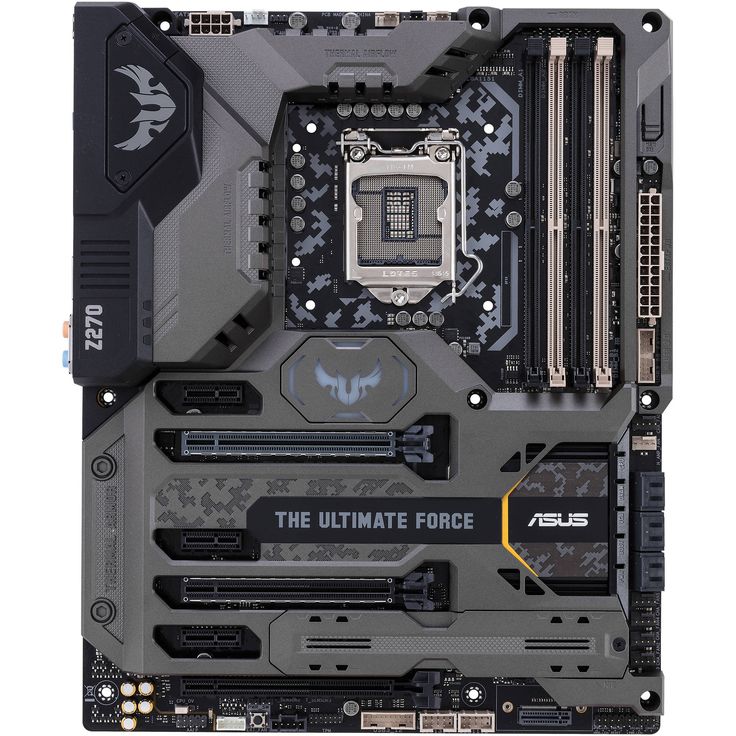
You can determine what RAM you have in two ways:
- Physical Inspections
- Reading the RAM Manual
1. Physically Inspecting the RAM
We have already mentioned above that RAM types have different notch positions.
You can consider the notch as keys for determining what RAM stick you have.
For instance, a DDR3 RAM stick has a notch in between 5 and 6 cm from the left. A DDR2 has the center of the notch positioned at exactly 7 cm from the left and so on.
Pin Count
Another way to determine what RAM stick you have is to count the number of pins it has on the front AND on the back side.
Desktop Based (DIMM)
- DDR4 has 288 Pins
- DDR 3 has 240 Pins
Laptop Based (SO-DIMMS)
- DDR4 has 260 pins
- DDR3 has 204 pins
Also Read: Can You Use Laptop RAM in Desktop?
Determining RAM Stick from Its Voltage
Most of the time the RAM sticks make mention of their rated voltage on the label.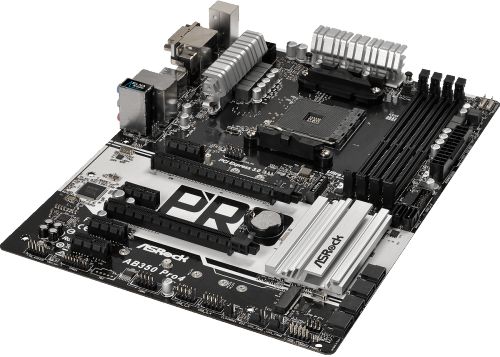
You can determine the type of RAM you have by reading their rated voltage:
- DDR 2: 1.8 Volts
- DDR 3: 1.35-1.5 Volts
- DDR 4: 1.05-1.2 Volts
The voltage rating can be a bit misleading. There are most certainly exceptions. For instance, a high performance DDR3 RAM stick can be rated at 1.65 volts as well.
2. Reading the RAM Manual
The best and the most comprehensive way to determine what RAM stick you have is to read its manual.
To find out the manual for your RAM stick, you have to first determine its model. You can determine the model number of your RAM by its label.
For instance, my RAM stick has the model number: Kingston khx1600c9d3k2/4gx. A simple search for this online leads to its comprehensive manual.
Here I can determine a myriad of characteristics such as the fact that it is a DDR3 stick with 2 GB module, has 1600 MHz frequency, CAS Latency of 9 and has 240 pins.
Kingston khx1600c9d3k2/4gx specs
Hence from here, I can know determine that this would only work on a motherboard designed for DDR3 RAM with ideal frequency support for at least 1600 MHz.
Also Read: How to Check How Much RAM Your Motherboard Can Support?
Incompatible RAM Issues
When your RAM and board are incompatible, chances are that you won’t even get as far as installing it on the board as the slots will have different notch positions compared to the RAM.
Just don’t try and force it even if the slot and the module are of the same size. Doing so could permanently damage the board or the RAM module. If you find yourself in this situation, check if you can exchange the module for an appropriate one.
Also Read:
- How to Check PCI Express Slot Version?
- How Difficult is it to Build a PC?
- How to Check How Many Cores You Have in Your CPU?
Conclusion
Hopefully, this has given you some insight into memory and motherboard compatibility. Here we looked in depth at how to tell if RAM will work with your motherboard or not.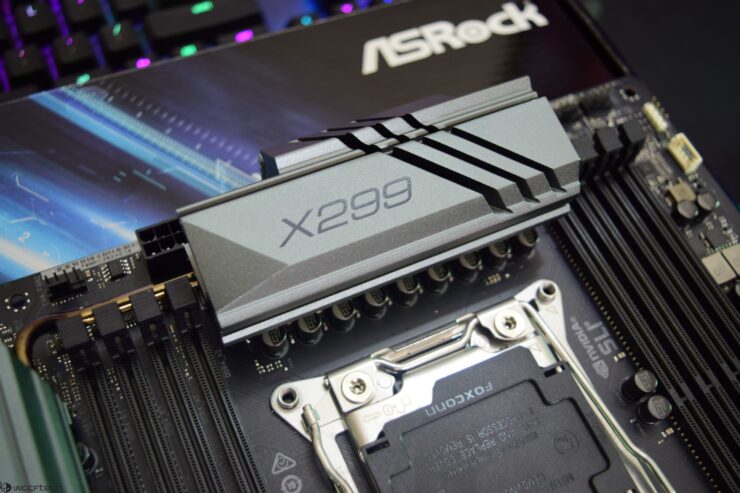
In confused, you can always leave a comment below, but basically, you have to determine the specification of your motherboard as well as the RAM stick you have in order to determine if they are compatible with each other.
From the manuals you will get great insights about the kind of slot the board has for memory, the number of slots, the maximum memory it can support and the type of RAM that is compatible.
But in the most basics of sense, determining the RAM type supported ( i.e DDR2, DDR3, DDR4 etc.) is the most important step in determining whether it will work on your motherboard or not.
Also Read:
- How to Know if Graphics Card is Compatible With Your Motherboard?
- Can You Use NVIDIA Graphics Card with AMD Processor?
How Do I Find Compatible RAM for a Motherboard?
So much of our gaming, entertainment, and work-life relies on computers, that regular PC upgrades have become quite a necessity.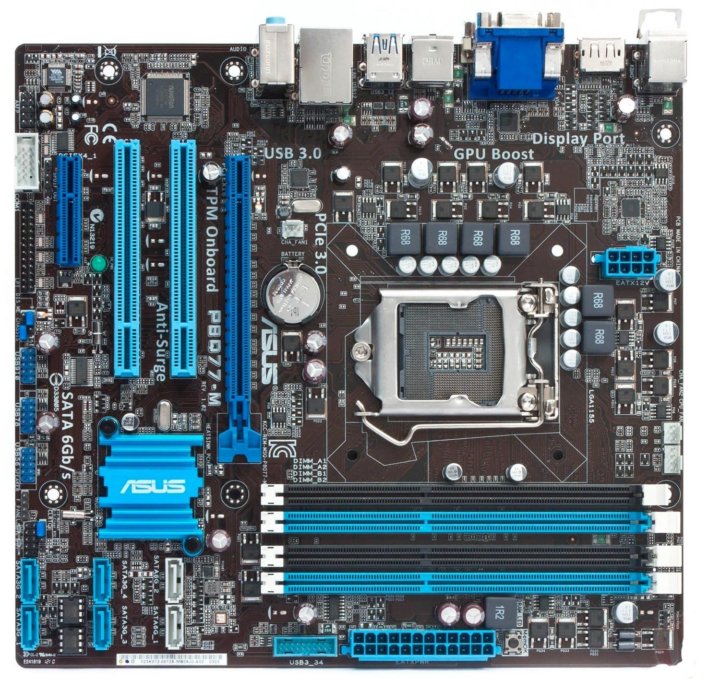 However, buying an entirely new computer when your old one is perfectly up and running can be a waste. Especially since you can usually upgrade RAM to provide enough of a performance boost to tackle heavier workloads.
However, buying an entirely new computer when your old one is perfectly up and running can be a waste. Especially since you can usually upgrade RAM to provide enough of a performance boost to tackle heavier workloads.
When upgrading an older system, RAM and storage are two of the most obvious parts you can change. Since RAM usually provides a more noticeable performance boost, let’s focus on finding the correct RAM for your motherboard.
Laptop (SODIMM) and Desktop (DIMM) RAM
When finding compatible RAM for your computer, one of the first things to consider is whether it’s a laptop or a desktop computer. Both types do have the same essential parts: a CPU, GPU, and RAM. But you should keep in mind that these parts will have different form factors depending on the device.
Laptops will have mobile editions of a desktop’s full-size computer parts. These mobile versions are smaller and use less power. They provide longer battery life and better portability at the expense of performance.
Laptop-compatible RAM is known as SODIMM (Small Outline Dual Input Memory Module). A SODIMM will have significantly lower pin counts than a regular DIMM (Dual Input Memory Module). So if you are planning to change your laptop’s RAM, you should buy SODIMM RAM because regular desktop RAM will not fit your machine’s RAM slot. Just by looking at the size or the component, you’ll easily be able to identify laptop RAM and desktop RAM. A SODIMM RAM looks like this:
Image Credit: Jacek Halicki/Wikimedia Commons
If you’re installing RAM on a desktop computer, then a regular DIMM RAM is the way to go. A DIMM RAM looks like this:
Image Credit: Sadenäyttely/Wikimedia Commons
DDR Generations
After considering what form factor of RAM to get, you will then need to consider what generation of RAM your motherboard’s RAM slot will accept. DDR is the most common type of RAM used today and is a standard that RAM and motherboard manufacturers must follow. Over time, more advanced generations of DDR have arrived, the latest being DDR5.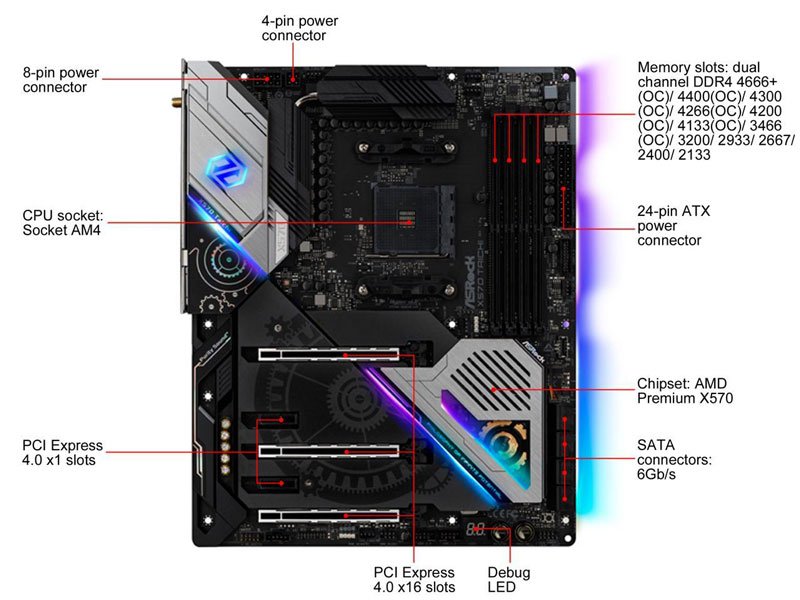
Computers today use generations DDR3, DDR4, and DDR5, with DDR4 being the most common and DDR5 as the future. These different RAM generations are not backward compatible, so make sure you buy the type that your motherboard can support.
Luckily, Windows gives you an easy way of finding out what DDR generation your computer is currently using. Fire up your machine and hold Ctrl + Shift + Esc. Once your Windows Task Manager has popped up, click on the Performance tab and select Memory to find out your computer’s DDR generation. You can use a similar process to find out this information on Linux and macOS systems.
If you’re building a computer from scratch, you can simply refer to your motherboard’s spec sheet to find out what type of RAM generation it can run. Or you can use an online tool like PC Part Picker to determine what RAM to get.
Related: DDR5 RAM: How Fast Is It and How Much Does It Cost?
RAM Speed
Another thing to consider when buying RAM for your computer is speed.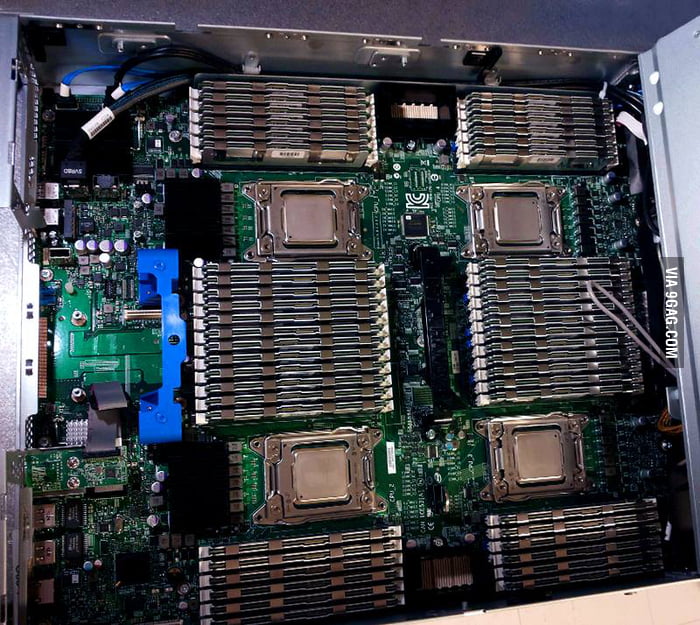 RAM speed is an important measurement of how fast your memory will perform during tasks. RAM speed is a frequency usually measured in MHz (Megahertz). As a rule of thumb, the higher the frequency, the faster the RAM, meaning better performance.
RAM speed is an important measurement of how fast your memory will perform during tasks. RAM speed is a frequency usually measured in MHz (Megahertz). As a rule of thumb, the higher the frequency, the faster the RAM, meaning better performance.
Today’s most common RAM speeds range from 2400 MHz to 4400 MHz. But just because you have the budget for a 4400 MHz RAM stick doesn’t mean your motherboard will support it.
If you know what DDR generation your motherboard supports, you can refer to the table below to find out what RAM frequency it can accept.
| DDR Generation | Frequency Range |
|---|---|
| DDR | 200-400MHz |
| DDR2 | 400-1000MHz |
| DDR3 | 800-1600MHz |
| DDR4 | 2400-4400MHz |
RAM Capacity
Image Credit: Geni/Wikimedia Commons
At this point, you already have an idea of what type of RAM is compatible with your motherboard. But before running to your nearest shop and buying RAM, you may also want to consider how much you’ll need for your daily use. After all, some tasks require less RAM, and others may need significantly more.
But before running to your nearest shop and buying RAM, you may also want to consider how much you’ll need for your daily use. After all, some tasks require less RAM, and others may need significantly more.
If you’re a writer, student, teacher, or a person who uses a computer to consume media, then 4GB-8GB of RAM may be enough. However, you should still aim for more, to future-proof your device. Software inevitably gets more complex and benefits from more RAM in the future.
If you’re a gamer, 8GB of RAM is usually enough for most eSports games and older triple-A titles. But if you like playing modern games, 16GB of RAM is commonly agreed-upon as the sweet spot for triple-A gaming.
Many people consider 16GB of RAM as the base or budget option for editors, engineers, and designers. It gives just enough performance for a comfortable working experience. Generally, the more RAM you can afford for video editing and CAD, the better. Some would even go as high as 64GB of RAM for serious 4K resolution video edits and complex CAD designs.
Related:How Much RAM Do You Really Need?
Now that you have working RAM compatible with your motherboard, there are still a few small extra details you might want to consider.
Your RAM might be compatible with your motherboard. Still, once you assemble your PC, you might notice that your gigantic CPU cooler is blocking your RAM slots. It is important to also think about clearance when selecting RAM. Remember, some RAM sticks are thicker or taller than others, especially if they come fitted with LED and heat sinks.
Speaking of LED, having RGB is another small consideration. Although it doesn’t help with your performance, many people appreciate the more interesting aesthetic. So if you love having full RGB on your system, it’s your call, but remember that some motherboards might not support RGB control on your RAM sticks. You might want to confirm that by looking at your motherboard’s spec sheet or manual.
Lastly, some motherboards will have two or four RAM slots.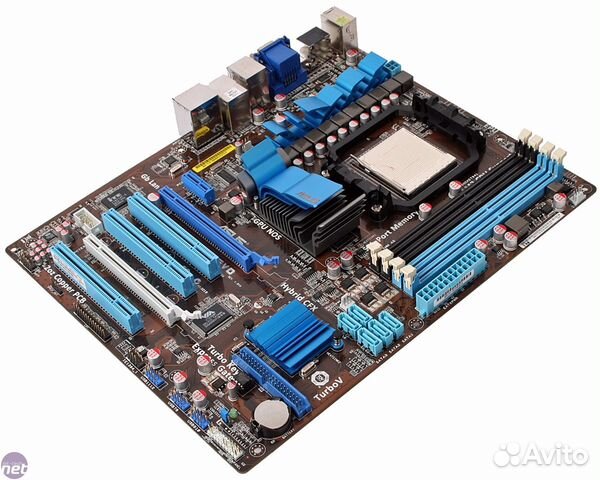 Remember to dual-channel your RAM sticks to squeeze every bit of performance out of your RAM. That means having two smaller capacity RAM sticks is better than having one large-capacity RAM stick. So, if you were planning to install 16GB of RAM on your system, having two 8GB sticks of RAM would be better than a single stick of 16GB RAM.
Remember to dual-channel your RAM sticks to squeeze every bit of performance out of your RAM. That means having two smaller capacity RAM sticks is better than having one large-capacity RAM stick. So, if you were planning to install 16GB of RAM on your system, having two 8GB sticks of RAM would be better than a single stick of 16GB RAM.
RAM Upgrades: Cheap, Effective, and Easy
When you find the right RAM, it should be a cost-effective upgrade that provides tangible benefits. In particular, working with images, PDFs, or other large files should be more comfortable with more RAM.
Once you’ve got the DIMM or SODIMM that’s perfect for your needs, it’s time to install it. Don’t worry, this is an easy process, but make sure you understand it before you jump in.
RAM Compatibility: Important Things You Should Know
(Many of the links in this article redirect to a specific reviewed product. Your purchase of these products through affiliate links helps to generate commission for Storables. com, at no extra cost. Learn more)
com, at no extra cost. Learn more)
Every computing device has RAM used for its computational operations. Random Access Memory is a hardware component of the computer as well as a fast and short-term volatile memory. In this article, you will understand RAM compatibility and the important things you should know about it.
How Do I Know What RAM Is Compatible?
Understanding RAM compatibility from PC to PC and RAM size to another RAM size is a huge issue. Especially for many computer users who want to maximize their PC capabilities and to do more with fewer PC resources. What further complicates the issue is that there are myriads upon myriads out there to choose from. Made by several manufacturers, these RAM types operate at various clock speeds.
A first step to knowing the RAM size and clock speed that is compatible with your PC model or motherboard and other related RAM information is to press CTRL + SHIFT + ESC on your keyboard. This will open up the “Task Manager”, navigate through to the second tab titled “performance” and click on the “Memory Row”. This will display the RAM properties that are specific to your machine.
This will open up the “Task Manager”, navigate through to the second tab titled “performance” and click on the “Memory Row”. This will display the RAM properties that are specific to your machine.
The information displayed on the memory tab lets you know which RAM type is compatible with your PC and which are not. Following these steps will let you know what RAM is compatible with your system. As well as the current size installed and the clock speed it runs at and how many additional slots are empty.
Types of Motherboards
On every assembled or branded tablet, laptop, PC, or mobile device, there is the heart of the device – the motherboard. It is a circuit system that contains other subsystems to which other important peripherals are directly installed or connected. The motherboard is the main printed circuit board present in computers that hold other electronic components of the system together. Motherboards are determined largely based on form factors, the most common is the ATX, and others are ITX, NLX, and LPX.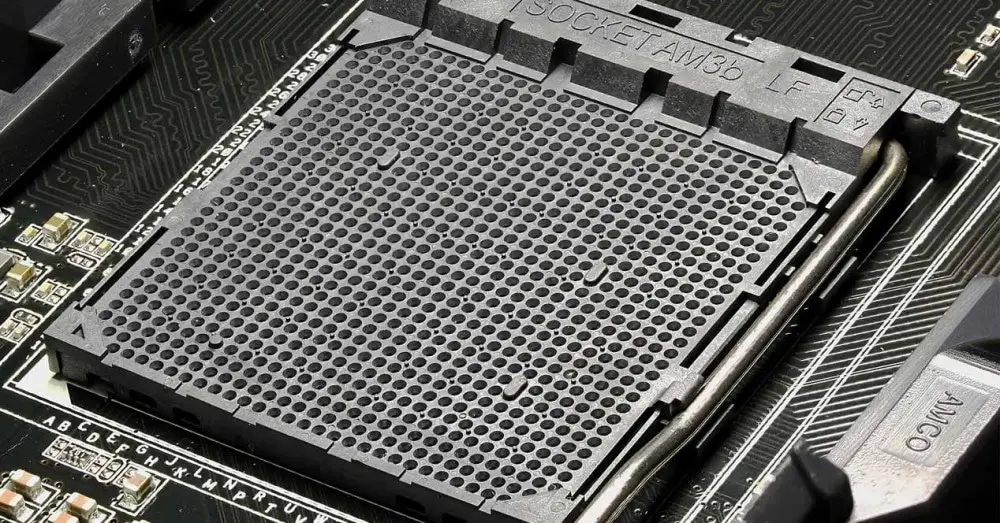
AT Motherboards
check latest price
The earliest computers used the oldest motherboards called the Advanced Technology (AT). AT motherboards made use of advanced technology (AT) power connectors that were available during the early ’80s. Also, there are two power connectors of 6 pin each mounted on it. Owing to the size of the motherboards, it was difficult to install new peripherals. And at the same time, it was easy to damage the motherboard from inserting a component in the wrong place.
ATX Motherboards
Read More Reviews
This is an upgrade by Intel to the Advanced Technology (AT) motherboards. The Advanced Technology Extended (ATX) motherboards were born in the ’90s and are still currently used. Unlike their previous counterpart, they allow the interchangeability of connected parts without damage and are generally much smaller in size.
LPX Motherboards
Read More Reviews
The low profile extension motherboards or LPX motherboards were created in the ’90s after the creation of AT motherboards by Western Digital. LPX motherboards contain output and input ports at the back of the motherboard and utilize riser card slots for serial, parallel, video, and PS/2 ports.
LPX motherboards contain output and input ports at the back of the motherboard and utilize riser card slots for serial, parallel, video, and PS/2 ports.
How Much RAM Is Supported By My Motherboard?
The answer to many computer-related hardware questions commonly contains the phrase “it depends”. Well, this question is no different too. How much RAM your motherboard can support depends on the capabilities of the motherboard in question.
Different PC from different manufacturers have specs of the maximum amount of RAM supported by the specific PC type and into how many slots the RAM can go into. To find out how much RAM is specifically supported by your PC motherboard:
- Check with your manufacturer’s website
- Google the full PC name and check the mentioned spec for the maximum RAM it can support
- Try using the Memory Compatibility Tool to check for RAM motherboard compatibility or
- Use a third-party software like CPU-Z or HWinfo to check for compatibility
Is RAM Compatible With Any Motherboard?
How to check my motherboard RAM compatibility e. g. Asus motherboard RAM compatibility? For example, let’s assume your PC supports memory modules for up to 8GB RAM and you try to use a 12GB RAM. The system may not be able to properly read the installed RAM. Meaning, your motherboard or processor won’t support the faster memory speed that is supposed to be provided by the bigger RAM. When this happens, the modules are clocked at the highest speed the motherboard can accommodate. For example, a motherboard and CPU that supports memory up to 2133 MHz can use 2400 MHz RAM but only run it up to 2133 MHz.
g. Asus motherboard RAM compatibility? For example, let’s assume your PC supports memory modules for up to 8GB RAM and you try to use a 12GB RAM. The system may not be able to properly read the installed RAM. Meaning, your motherboard or processor won’t support the faster memory speed that is supposed to be provided by the bigger RAM. When this happens, the modules are clocked at the highest speed the motherboard can accommodate. For example, a motherboard and CPU that supports memory up to 2133 MHz can use 2400 MHz RAM but only run it up to 2133 MHz.
Similarly, having a computer that uses DDR3 RAM and you want to install DDR4 RAM wouldn’t work. Because they use different clocking technologies and are not compatible with hardware and software standards. This means that if the motherboard specifies DDR3 RAM, then its DDR3 RAM only that should go into the RAM slot. All other RAM wouldn’t work.
Can I Use 1600 Mhz RAM In The 1333 Mhz Motherboard?
Yes, you can use 1600 MHz RAM in the 1333 MHz motherboard..png) The problem here is that you’d be wasting precious resources like money, except if it was gifted to you by someone or you made a wrong purchase. The drawback to this is that putting a higher 1600 MHz RAM in 1333 MHz motherboard wouldn’t utilize the full speed of the RAM. An interesting observation to take note of is that RAM runs at a speed different from the speed it is sold at. If it is sold at the maximum speed of 1600 MHz, it is guaranteed to work at that speed or less.
The problem here is that you’d be wasting precious resources like money, except if it was gifted to you by someone or you made a wrong purchase. The drawback to this is that putting a higher 1600 MHz RAM in 1333 MHz motherboard wouldn’t utilize the full speed of the RAM. An interesting observation to take note of is that RAM runs at a speed different from the speed it is sold at. If it is sold at the maximum speed of 1600 MHz, it is guaranteed to work at that speed or less.
For example, a 1600 MHz RAM will work at 1600 MHz or less. That is to say, a 1600 MHz RAM will work at 1333 MHz just fine. Alternatively, to unlock the full potential of your RAM, you can overclock your motherboard. This will result in the use of the full 1600 GHz capacity and increase better system performance. In a worst-case scenario of using a higher RAM for a 1333 MHz motherboard, the system may not even boot.
Does RAM Speed Have To Match Motherboard?
Yes, it does and no it doesn’t have to match the motherboard.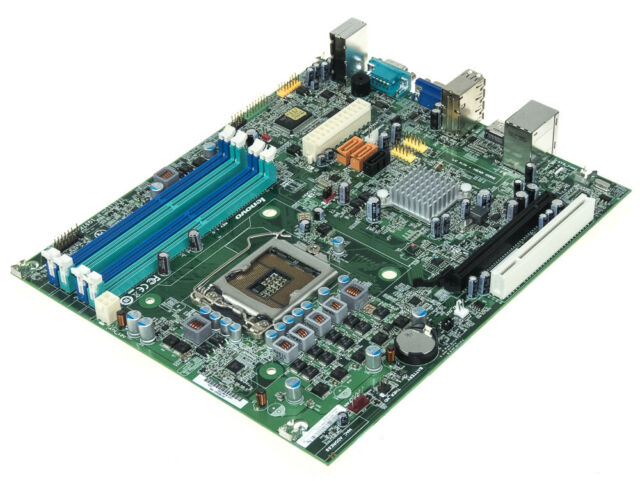 But to be on the safer side of things, both the RAM speed and the specific motherboard specs should match for optimum PC performance.
But to be on the safer side of things, both the RAM speed and the specific motherboard specs should match for optimum PC performance.
Cases abound where higher clock speeds other than the clock speed supported by the motherboard have been known to work and no problems were said to be encountered in such instances. If there were any recorded drawbacks to these instances, it is only that the PC was running at the clock speed specified by the motherboard and not at the higher frequency RAM spec.
Generally speaking, most laptops or desktop computers come with two or more slots for RAM sticks. This is especially true for most recently produced laptops and desktops. To fill up these slots and to overcome the drawback of using smaller RAMs, while aiming to maximize the computing capabilities of your PC, then you must understand RAM to PC compatibility. This is because it is highly advisable to use RAM sticks made by the same manufacturer, of the same size, and having the same frequency ratings supported by your motherboard type
Can I Mix And Match RAM? (RAM Compatibility With Other RAM)
It depends.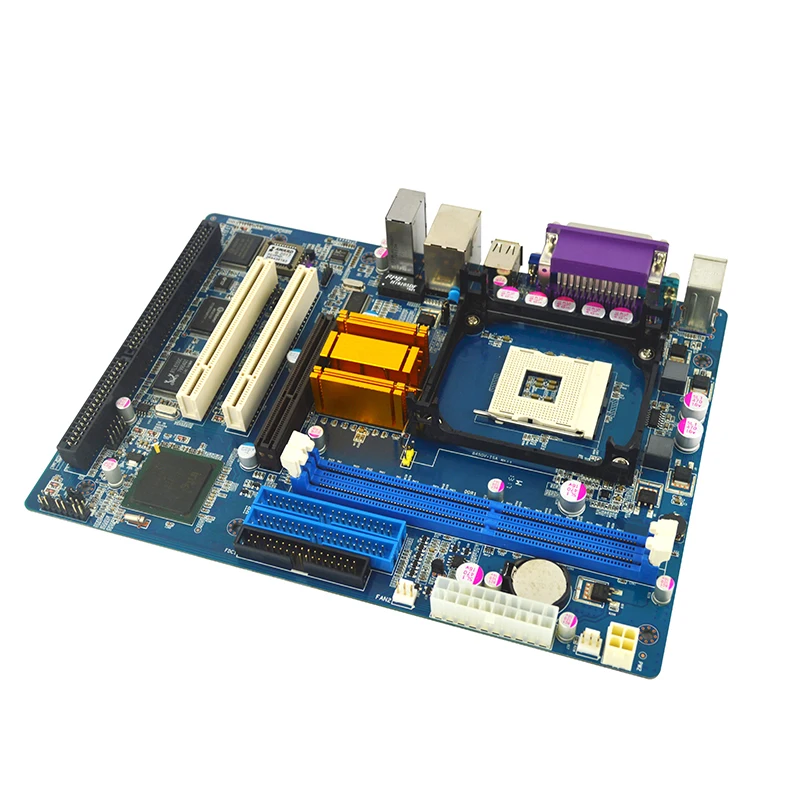 Depending on what your computer can support, you may be able to mix and match RAM or you may not. Again, it all depends on how the computer’s motherboard was designed by the specific manufacturer. Mix-matching RAM may work in some systems, and in other systems, it may degrade the system performance. Your definition of mix-matching also matters here. PC motherboards support specific slots for RAM memory or you can say that the slot modules are keyed. Meaning that there is a specific slot type for DDR2, DDR3, and DDR4 RAM memory types and mix-matching in this sense is highly unlikely.
Depending on what your computer can support, you may be able to mix and match RAM or you may not. Again, it all depends on how the computer’s motherboard was designed by the specific manufacturer. Mix-matching RAM may work in some systems, and in other systems, it may degrade the system performance. Your definition of mix-matching also matters here. PC motherboards support specific slots for RAM memory or you can say that the slot modules are keyed. Meaning that there is a specific slot type for DDR2, DDR3, and DDR4 RAM memory types and mix-matching in this sense is highly unlikely.
If the two RAM types you want to mix and match are DDR4 for example, then chances are they are going to work. In cases where two same DDR4 RAM of different speeds are used, the result will be that the computer will default to the speed of the slowest RAM present. Mix matching can also mean using RAM from different brands together on the same PC. If it’s the same DDR type, it would work irrespective of the brand differences they have.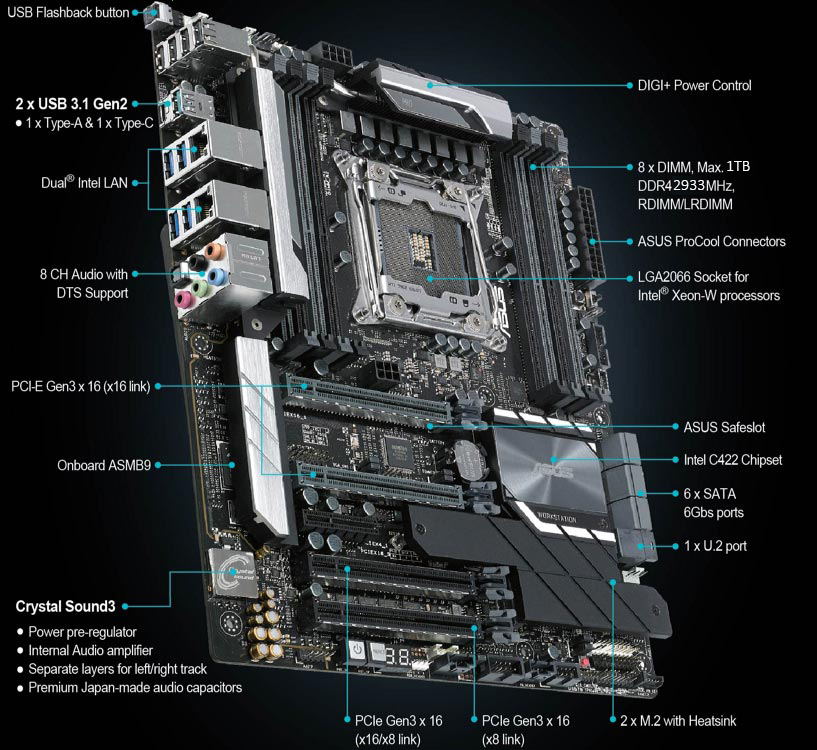
Can I Use 1333 MHz And 1600 MHz RAM Together?
Yes, you can use 1333 MHz and 1600 MHz RAM together especially if your PC supports more than 8GB of RAM. If your PC still supports 8GB or lower, there is still no problem as your PC will revert to using the smaller of the two MHz sizes for both of the 1333 MHz and 1600 MHz RAM sizes installed. The newly installed RAM wouldn’t be able to run as “Dual Channel”. Dual-channel is an optimization mechanism that doubles the bandwidth of RAM. But this wouldn’t work because you are now using two different RAM sets that fail to meet the criteria for dual-channel implementation on your PC.
Upgrading Your RAM: All You Need To Know
You need to be armed with certain information before you can make the correct choice of what type of RAM (e.g. DDR4 or DDR3 or DDR2 RAM) and what RAM size to upgrade to. To do this right, you need to know the type of RAM your PC motherboard supports and the maximum size the PC can take. Other information to look out for is the clock speed of the RAM in MHz.
Other information to look out for is the clock speed of the RAM in MHz.
If you’re getting two RAM sticks or more, then advisably the two should have a matching MHz size. Another information to look out for is the number of RAM slots you have on your motherboard. Generally, PCs like laptop or desktop come with two and above slots. Having confirmed such details, you can then go ahead and purchase the appropriate RAM size that your PC supports.
To install the newly purchased RAM make sure your PC is turned off. Then use a screwdriver to lose the back of the system case where the RAM resides after which you place the new RAM in the empty slot there. Close back the case and re-screw the nut, then turn on the PC, and voilà your RAM is upgraded.
5 Best RAM You Should Try
There are tons of different RAMs out there for you to try. Here are 5 best RAM choices to try based on your needs:
1. Best DDR4 RAM
G. Skill Trident Z RGB is one of the best RAM out there. This is not just because it’s fast, but because it features 14 to 19 latency which makes it awesome for all kinds of use having an almost perfect speed of up to 4,266.
Skill Trident Z RGB is one of the best RAM out there. This is not just because it’s fast, but because it features 14 to 19 latency which makes it awesome for all kinds of use having an almost perfect speed of up to 4,266.
2. Best DDR3 RAM
This RAM product line offers some of the best DDR3 RAM on the market today. Built for speed and performance, it has a latency of 9 to 11 and share speeds of 1866MHz to 2666MHz.
3. Best LED RAM
Corsair is a trusted name in the world of computing. Corsair RAM gives off a maximum performance with compatibility to most of the DDR4 RAMs. This RAM series features CL16 latency and whopping speed of 3,466 MHz
4. Best Laptop RAM
Designed for SODIMMs, Crucial RAM Ballistix Sport is ideal for use in most laptops. It supports great multitasking capabilities and saves power while at it keeping you covered.
5. Best Gaming RAM
Are you looking to build a high-end gaming rig? Then you’d want to use this RAM. This is because the RAM is available for frequencies of up to 5,000MHz and features anti-overheating capabilities.
This is because the RAM is available for frequencies of up to 5,000MHz and features anti-overheating capabilities.
The next time you decide to buy a RAM endeavor to check for compatibility and go for the best so as to get optimum performance.
Which random access memory (RAM) is compatible with the motherboard
There are not only many different types of RAM modules, but also many types of motherboards. Finding compatible RAM for a particular motherboard you own or want to buy can make you dizzy.
Luckily, there are a few things that will help you quickly find compatible RAM, and I’ll cover each of them in this article.
What kind of motherboard I have
The first step in finding compatible memory (RAM) for your motherboard requires you to know what type of motherboard you have .
If this is a motherboard that you already have and installed in your PC, here’s how to find its name:
- Open the Windows system search box and type «System Information» in the search field.

- Click System Information in the search results → a new window will appear with summary information about your computer and its components.
- In the Item column, find the Main Board Manufacturer and Main Board Model.
For example, my baseboard manufacturer is Micro-Star International (MSI) and my baseboard product is Prestige X570 Creation.
This means my motherboard is MSI Prestige X570 Creation.
Record the make and model of your motherboard in a safe place.
If you are still having trouble finding your motherboard model, there is another method that involves using third party software.
Using a Third Party Tool to Find Your Motherboard Name
There are many free tools that display all your system information in one simple interface.
I recommend using CPU-Z. It’s free and easy to use.
After you finish the installation, open the program and go to the tab Mainboard . From there, you can see exactly what kind of motherboard you have.
From there, you can see exactly what kind of motherboard you have.
Once you find the make and model of your motherboard, be sure to write it down.
Finding my motherboard specs
Once you’ve determined what motherboard you have, it’s time to find the exact RAM modules it supports.
Find your motherboard’s product page on the manufacturer’s website.
For example, I went to msi.com and found my Prestige X570 Creation motherboard.
After finding the product page and looking at the «Specifications», I found out that my motherboard has 4 DDR4 DIMM slots and supports up to 5000+ MHz (via XMP).
But, what do these terms and numbers mean? I will explain this in the next section.
You can expect to find the following RAM specifications for your motherboard:
Let’s go through these specifications in more detail.
Type of RAM
The type of RAM supported by your motherboard is the most important attribute to consider. This is because there are several generations of DDR RAM, from DDR to DDR5.
DDR RAM is the type of RAM you’ll find in most modern consumer PCs.
On your motherboard datasheet, look for information that looks something like this: «Supports 4x DDR4 5000MHz DIMMs.»
This is what my motherboard spec says and means my motherboard can support up to 5000MHz DDR4 RAM.
It is very important to know the RAM specifications supported by your motherboard because different generations of RAM are physically incompatible .
Therefore, if your motherboard supports DDR4 RAM, you will not be able to insert a DDR3 or DDR5 RAM stick into it, and vice versa.
Supported amount of RAM and number of modules
Another important attribute is the amount of RAM supported by your motherboard.
This includes:
- the total amount of RAM on your motherboard
- maximum RAM per module
- number of modules you can install
Unfortunately, each motherboard manufacturer structures their product pages differently. The information will most likely be on the Specifications tab next to the Memory section.
For example, ASUS PRIME X570-PRO motherboard says 4x DIMM, max 128 GB, DDR4 .
DIMM slots The is where you install the RAM. Slots for DIMMs or dual-row memory modules are also referred to as «RAM slots».
The more DIMM slots on your motherboard, the more RAM modules you can install.
This means that Asus motherboard has 4 RAM slots and 128GB maximum supported RAM capacity on this Asus motherboard. It is also only compatible with DDR4 RAM.
Motherboards can have one to eight DIMM slots, but most modern consumer motherboards have four DIMM slots.
Knowing how much capacity and how many DIMM slots your motherboard has is important when determining how many additional RAM modules to purchase.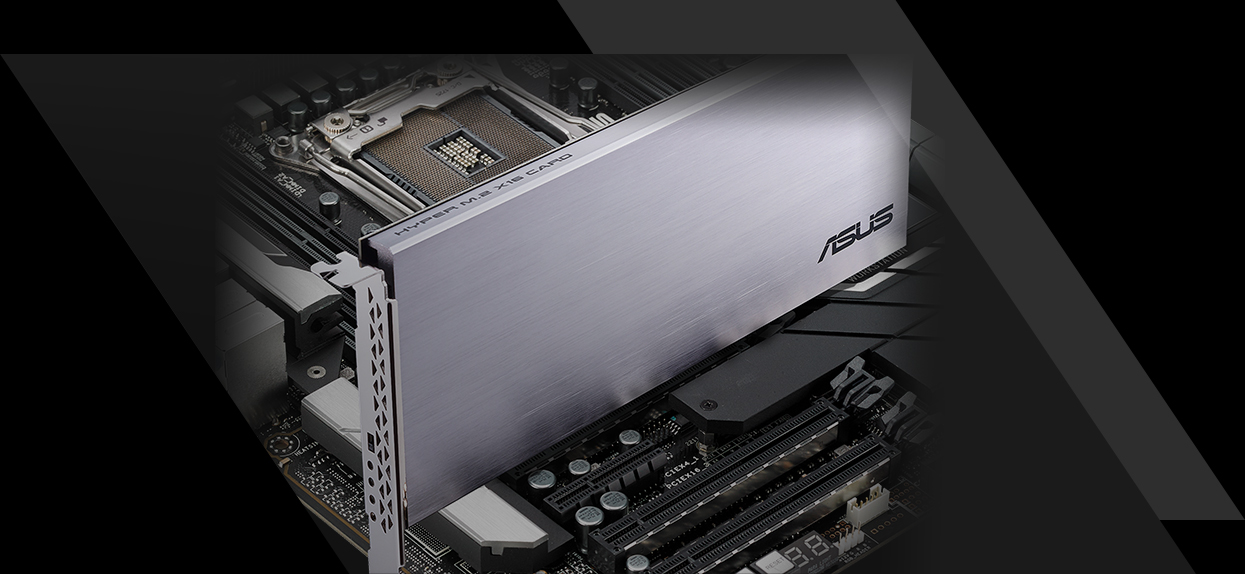
You don’t want to buy 32 GB sticks of RAM and then find out that your motherboard only supports 8 GB sticks per DIMM slot.
For my MSI Prestige X570 Creation motherboard, I found the number of DIMM slots and the maximum RAM capacity in the specifications table:
Supported RAM frequency
The next step is to determine which RAM frequency your motherboard supports.
RAM comes with different frequencies, so it is important to choose a RAM frequency that your motherboard is compatible with.
The RAM speed is in MHz and refers to how many cycles it can perform per second. For example, 3200 MHz RAM performs 3.2 billion transfers per second. The frequency of RAM affects the speed of storing and reading data.
This means that faster (higher bandwidth) RAM provides better performance because many CPU subsystems (latency, cache, etc.) are directly related to RAM frequency.
But you don’t have to worry too much and buy the fastest RAM on the market because RAM speed has diminishing returns when you go over 3200-3600MHz.
Also, faster RAM is useless if your the motherboard does not support it .
The motherboard specification officially states what frequency of RAM it supports out of the box. Also, of course, you can use the XMP profiles to beat what the motherboard has set as max.
At this point you should know :
- How many RAM modules does your motherboard support
- Supported maximum total capacity and capacity per module
- Which generation of DDR is supported
- Recommended maximum RAM frequency supported by your motherboard (which can also be exceeded using XMP overclocking)
ECC and Non-ECC memory
For basic workloads such as gaming, general productivity, browsing, word processing, content creation, video and photo editing, you will most likely not need ECC RAM , and the motherboard you own probably doesn’t even support that.
If you are using a more powerful workstation or server hardware, this is a completely different matter and you may need ECC RAM.
Using Memory QVLs (RAM)
The easiest way to find out which RAM is compatible with your motherboard is to check your motherboard’s Memory QVL list.
When you look up your motherboard’s RAM specifications on the manufacturer’s website, look for a page or section called «Memory QVL» or «RAM Support List» .
It will probably be posted in the Support section of your motherboard specification page.
Memory QVL (Qualified Vendor List) is a list provided by the manufacturer that lists manufacturer verified memory modules that are guaranteed to work with your motherboard.
Each motherboard model will have a QVL list that you can find, sometimes as a downloadable PDF file.
QVL makes it easy to find which memory stick to buy if you want to upgrade your setup or build a new PC.
However, the general consensus among PC builders is that it’s perfectly fine to use sticks of RAM that aren’t on the QVL list, as long as you’re using the correct type and speed of RAM.
It is not possible for the manufacturer to test every RAM module for QVL. The QVLs are a snapshot of what they tested and approved at the time the product was released.
Mixing RAM
If you already have RAM modules and want to add more RAM, be aware that mixing brands, frequencies, delays, capacities, or ranks of RAM can cause instability and slow performance of your RAM in general . Mixed RAM modules may not work at all.
Summary — Choosing RAM
Here is a summary of the steps you need to take to find out which RAM modules are compatible with your 9 motherboard0009 Desktop PC :
- Find your motherboard name
- Using your motherboard product name, check your motherboard’s QVL for compatible RAM modules.
If you need a RAM module that is not listed in the QVL, please make sure the RAM module(s) you want to buy matches the motherboard module:
- Supported RAM frequency
- Corresponds to the number of DIMM slots
- Corresponds to the motherboard RAM generation (e.
 g. DDR5)
g. DDR5) - Does not exceed the supported total amount of RAM
- Does not exceed the supported amount of RAM per module
If you want to upgrade the RAM on your laptop, instead of using the motherboard QVL list, use the laptop manufacturer’s QVL list. They may be harder to find (if they exist at all) and you may need to contact support.
Frequently asked questions about RAM
Should I use more RAM or faster?
The answer to this question depends on your needs.
For example, if you have 8 GB of RAM and are approaching your maximum RAM, it’s better to have more RAM.
If you are not currently at the RAM ceiling, then faster RAM will be better.
When the RAM capacity ceiling is reached, RAM usage is approaching 100% or at 100% while running workloads. If this happens, you will start using the swap file, which will significantly slow down your system.
Check your RAM usage levels when your system is under load to determine if you need more RAM or faster RAM.
Do I need DIMMs or SO-DIMMs?
If you are using a standard desktop PC, you will need to purchase DIMMs.
SO-DIMM memory sticks are designed for laptop and nano PC builds. They have a much smaller form factor.
Note that DIMMs and SO-DIMMs are not interchangeable.
Can 2 RAM sticks from different manufacturers be used?
You can use 2 RAM sticks from different manufacturers. As long as they are the same DDR generation as your motherboard, they will work.
However, I do not recommend using 2 different sticks of RAM due to conflicting frequencies and delays. They may have sync issues so I advise you to stick with the same brand.
Which RAM slots to use
RAM is one of the most famous and deceptively simple parts of a computer. You just buy the highest speed you can afford that is also compatible with your motherboard, put it in the motherboard, and that’s it, right?
Not really.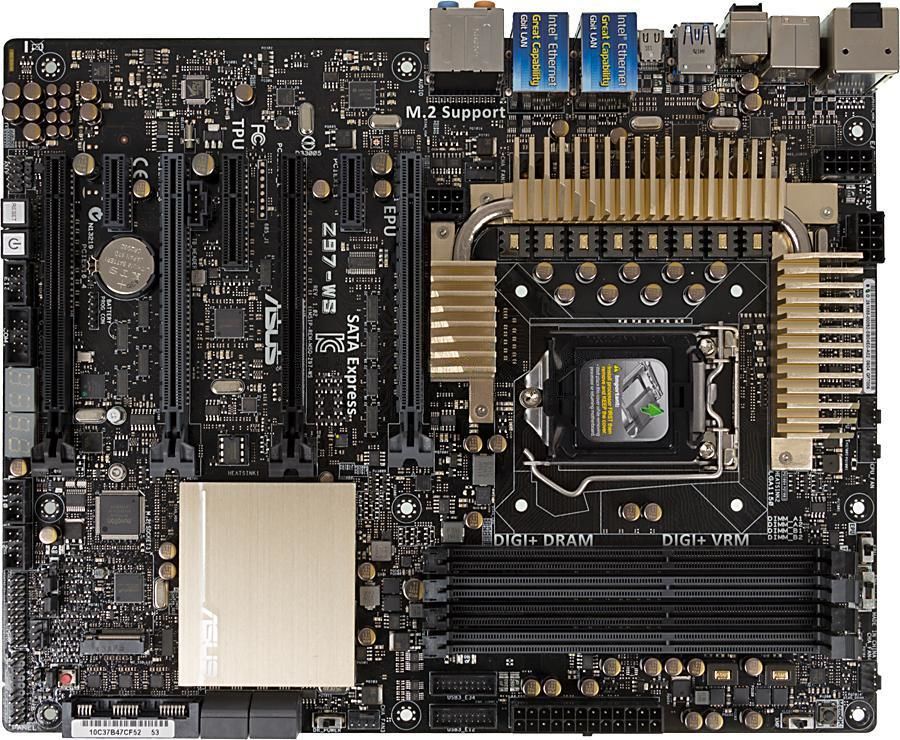 If you’re not especially careful with this last point, you could end up losing a lot of performance.
If you’re not especially careful with this last point, you could end up losing a lot of performance.
Let’s see exactly how the RAM slots affect this equation and whether you need to open the computer to reorder the RAM .
What is the importance of RAM slots
Does the placement of RAM matter? It depends on the circumstances.
Do you only have one stick of RAM? Then it doesn’t matter where you put it. But, if you have more than one stick of RAM, it absolutely matters where and in what order you place them .
This is due to what is called «multi-channel memory architecture», which is a fancy way of saying that if you have two or more sticks of memory, they can be used together to work in tandem (dual-channel, triple-channel, quad-channel, and etc.) faster than they could work alone.
The multi-channel architecture effectively doubles (or triples or quadruples or you get the idea) the data rate at which your CPU can access data stored in RAM.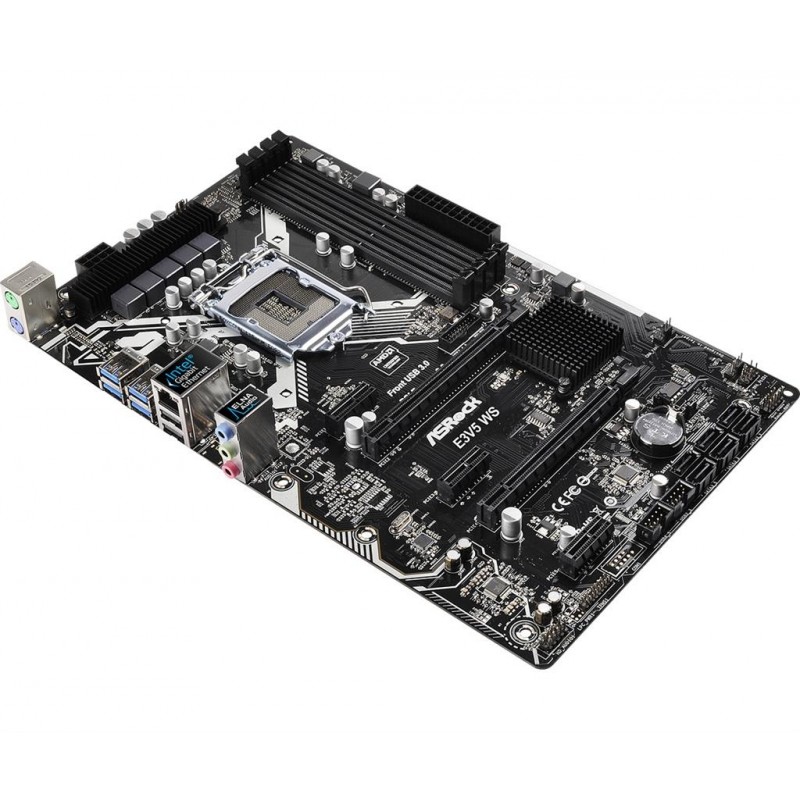
However, does not mean doubling performance for everyday applications . You’ll definitely see a performance improvement depending on how memory intensive the application is, but unfortunately it’s not a full doubling.
In order for this process to work, you need to make sure that RAM is inserted in the specified location — you can’t just use any free slot.
So if you use the wrong RAM slots on a dual channel (or more) motherboard, you will end up running in single channel mode and lose a lot of performance.
Which RAM slots to use
The safest and most efficient way to determine which RAM slots you should use is to check your motherboard manual as it may differ for each motherboard.
But, in general, the rule is:
If you have one stick of RAM, you should use the slot farthest from the CPU socket, regardless of the number of RAM slots on your motherboard.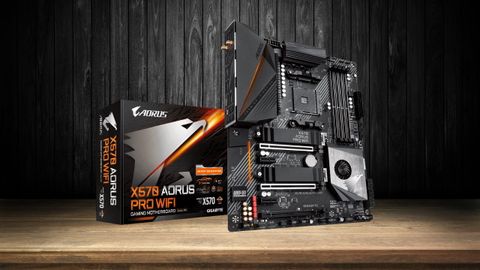
This will give you the maximum clearance for installing the CPU cooler.
If you have two sticks of RAM, you must use the slot farthest from CPU socket and the slot one slot away from the CPU.
If you have three sticks of RAM, you should use the three slots farthest from the processor socket.
If you have four sticks of RAM and a motherboard with four slots, you can simply populate all four slots with all four sticks of RAM.
If your motherboard has more than four slots, then you either have a server motherboard or a very fancy high-end desktop/workstation motherboard.
If you have a high-end motherboard, chances are you have eight RAM slots, which is double what is normally available on most motherboards.
These boards can also support 3-channel (rare) or 4-channel memory.
Anyway, what I said earlier applies here as well. Check the manual first — in any manual you will find a table similar to the following:
Your motherboard will most likely have a similar table showing how and where to install RAM, and following it is the best way to achieve smooth operation .
Overall :
- If for some reason you only have one stick of RAM available, you can use it anywhere.
- If you have two sticks of RAM, they have four potential slots they can use now, compared to two before. You should insert the brackets into the slots farthest from the processor for maximum clearance. But make sure both sticks are no more than one slot apart and you should be fine.
- If you have three sticks of RAM, just insert them into the furthest slots next to each other.
- If you have four sticks of RAM, you can put them all next to each other or space them apart for symmetry. If you have a motherboard that supports quad-channel memory, you may need to arrange the RAM modules in a specific pattern. You must «consult» your management for this.
- If you have five sticks of RAM, that’s the same as four, just insert an extra stick somewhere in the middle.
- If you have six sticks of RAM, put three on each side for symmetry.

- If you have seven sticks of RAM, that’s the same as five, just put an extra stick somewhere.
- If you have eight sticks of RAM, just fill all the slots.
That said, I really don’t recommend that you use non-uniform memory module configurations (3, 5, 7). You will most likely be mixing and matching RAM for these configurations, so this increases the chance of problems. You will also screw up a multi-channel configuration with an odd number of RAM modules.
If you have a motherboard of this caliber, I would advise you to get a set of four or eight RAM modules instead.
If you have a motherboard with even more RAM slots than shown above, you most likely have a professional or server motherboard with one or more CPU slots. In this case, I strongly recommend that you refer to your manual.
What I said above for motherboards with eight RAM slots, can be applied here as well, but it can also lead to instability, especially if you have an odd amount of RAM, like three, five, seven.
is doubly important if you have a dual processor motherboard. In these motherboards, each CPU controls half of the available RAM slots.
This means that if you only fill some of the slots, say four RAM slots on the side of the first CPU, the second CPU will not have its own RAM, and it will have to go through the first CPU to get some of the RAM, this can lead to serious slowdowns.
It is therefore always best to consult the manual first.
It is difficult to give information about these motherboards because there are so many potentially different configurations.
FAQ
Is it possible to run an odd number of RAM sticks?
You definitely can if all the RAM has matching or close to matching specifications.
But you may not be able to use dual channel (or more) memory.
For example, some motherboards support three-channel memory. It’s pretty rare, but they do exist.
So if you have three sticks of RAM on a motherboard (and CPU) that supports three-channel memory, you’ll be fine.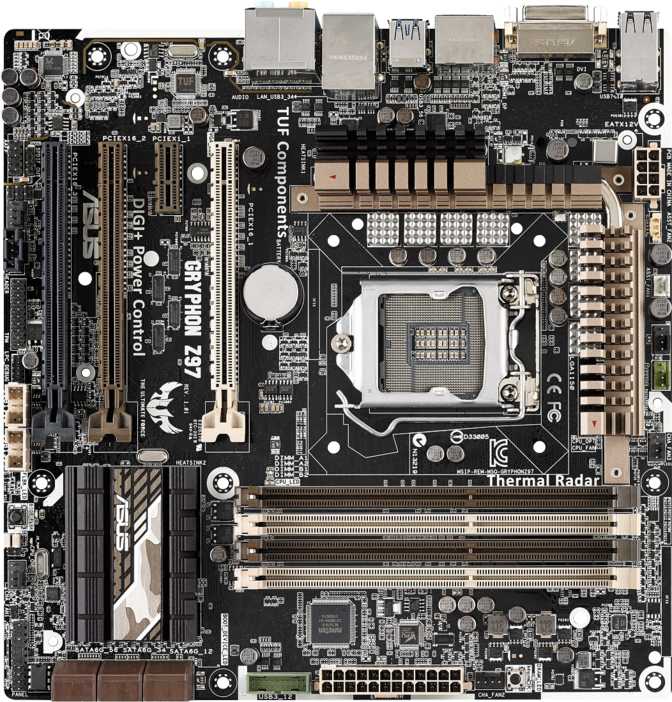
However, if you try to use three sticks of RAM on a motherboard (and CPU) that only supports dual-channel memory, this can result in all RAM running in single-channel mode .
I say «maybe» because some processors do it better than others.
There is a so-called «flex mode» supported by most modern processors where, for example, if you have 3 sticks of RAM filling up a four-slot motherboard (which doesn’t support tri-channel mode), it will just run two of the three sticks of RAM in dual-channel mode, the remaining stick of RAM will operate in single-channel mode.
If your CPU was made in the last 10-15 years, then it most likely supports this feature, so as long as your RAMs can work well with each other, you shouldn’t have problems using an odd amount of RAM.
Which dual channel RAM configuration should I use, 1+3 or 2+4?
It doesn’t matter.
The general consensus is to use 2+4 if you need a bit more space for the CPU fan, but 1+3 works great if that’s not a problem for you.
Do slots matter when using ECC RAM or ECC Registered RAM?
They have the same meaning as for ordinary consumer memory.
Registered/buffered memory, or ECC, benefits from placement in the appropriate RAM slots in the same way as conventional RAM.
Can you mix and match RAM?
If different RAM modules have the same specifications, then probably will work.
But, mixing and matching RAM is something I really don’t recommend .
Try to get as much RAM as you need bundled from the first time with instead of adding more random sticks — even if it’s the same type of RAM — later.
It will most likely work, but you may run into stability issues due to time lags and more… it will be very difficult for you to find the cause of the problems.
Random blue screens while working or playing are not the most fun.
Can DDR4 and DDR5 RAM be used together?
No. RAM generations are not interchangeable.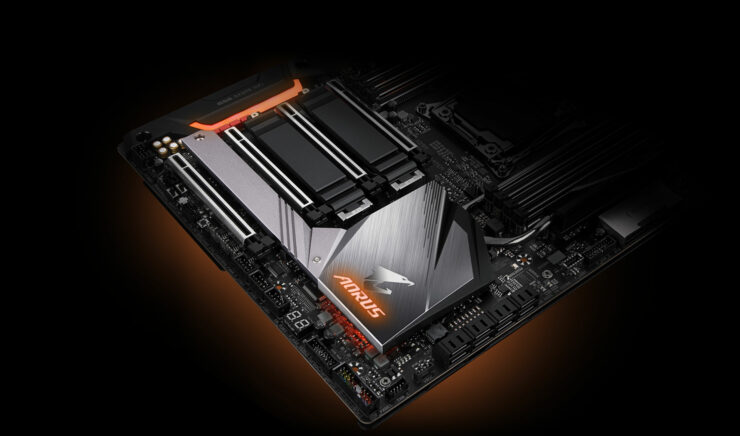
You can only use DDR3 with DDR3, DDR4 with DDR4, DDR5 with DDR5 and so on.
motherboard and RAM compatible
main hardware
Every computer or phone without exception has RAM. Without it, no computer device will function normally. Replacing RAM is the first thing that comes to mind when you need to increase the power and speed of your computer. Replacing the RAM is a very simple process that does not require any additional hardware. That is why many begin to improve their computer with this element of the system unit. Of course, you can change the processor or video card and this will give a greater performance boost. But an unprepared person is unlikely to be able to choose and install a suitable processor himself. Another thing is RAM. When buying it, you only need to know if the memory is compatible with the motherboard. Let’s see how to check compatibility.
Motherboard and RAM compatibility
Content
- What is RAM
- Why you need to check the compatibility of the motherboard and RAM
- What is the difference between RAM
- Manufacturer
- Frequency
9008
- Third method
- Method 1.
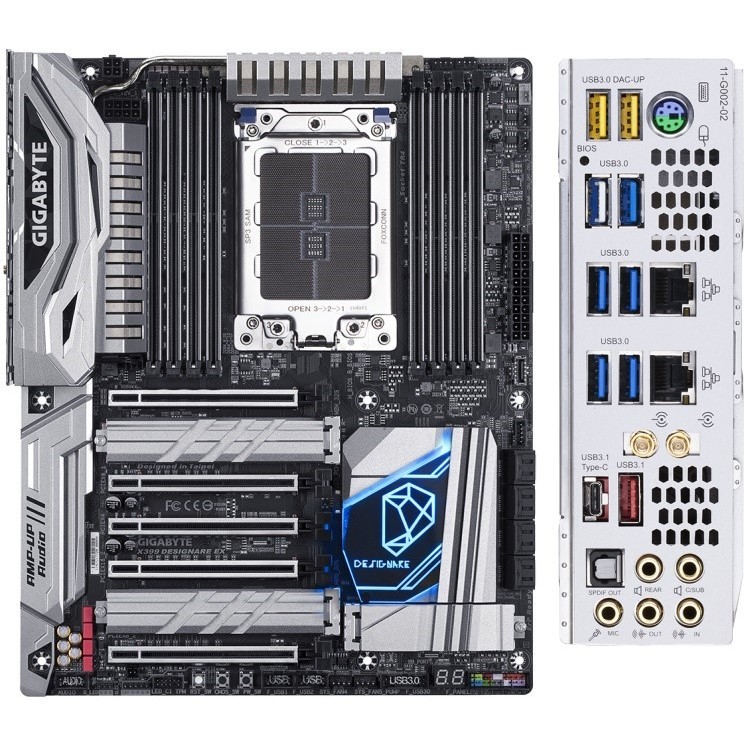 Using the standard Windows utility
Using the standard Windows utility - Method 2. Using Memtest86+
- Video — How to choose RAM
What is RAM
Let’s start with what RAM is. Random access memory, or RAM (Random Access Memory), is random access memory. It is a place of temporary storage of information with the help of which the software, the computer itself, functions. RAM contains information that the processor must process. In RAM, information waits for its turn.
Physically, RAM is a small bar on which microcircuits are located. Contacts are made on the bottom edge of the RAM, this side of the memory is inserted into the motherboard. Some, especially expensive, models of RAM are equipped with a metal cooling radiator and backlight.
RAM with heatsink
Interesting! RAM compares favorably with a hard drive in that the number of operations and its age have practically no effect on durability.
This means that high-quality RAM is a very reliable and durable device that will not fail for a long time. It is quite easy to break it by mechanical action, for example, if you insert it into the wrong slot.
We insert the RAM into the appropriate slot
Why you need to check the compatibility of the motherboard and RAM
It may seem that it does not matter what kind of RAM to insert into the motherboard. It is not that simple. If you use the wrong RAM, then the computer simply will not work. Otherwise, the RAM will not physically fit into the corresponding slot. If you buy the wrong memory bar, you will find yourself in a very unpleasant situation, because the RAM will either have to be changed or sold. In order not to get into this situation, let’s find out how to choose the right RAM bar.
What is the difference between RAM
Correct definition of RAM
In order to understand how to choose RAM and how to check its compatibility with the motherboard, you need to understand how different RAM sticks differ from each other.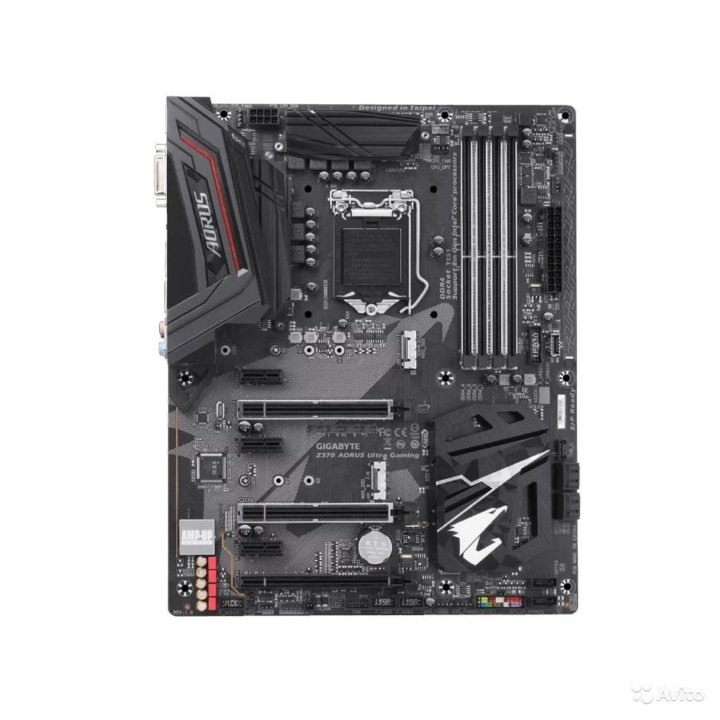 RAM differs in the following ways:
RAM differs in the following ways:
- memory type;
- manufacturer, a company that manufactures and sells a specific model;
- volume, the most important indicator, based on it, memory is selected;
- frequency.
Now let’s take a closer look at each of these aspects. First of all, you should pay attention to the type of RAM. It can be: DDR2, DDR3 or DDR4. Of course, there are other types, but they are very outdated and there is no point in considering them now. All types of memory differ from each other not only in terms of transmission speed, but also physically: a different number of contacts and a different location of the “key”.
Types of RAM
If you have a motherboard that only supports the DDR2 RAM standard, then in no case should you insert other types of RAM into it. She will not enter there physically and will not work. Nevertheless, there are craftsmen who «modify» the RAM with a file or in any other way insert it into the wrong slot.
Manufacturer
Motherboard manufacturer rating
Motherboards are not picky about the RAM manufacturer. Choose any manufacturer you like.
Memory size
Motherboard memory size
Motherboards have a limit on the maximum capacity of one module per slot. If you insert a module larger than the capacity provided, the memory will not function correctly or will not work at all.
Frequency
Motherboard frequency
An important indicator of compatibility. Each MP has a maximum frequency. While you’re unlikely to get much of a power boost using faster RAM, fast RAM won’t work with an outdated motherboard. Perhaps the memory will work well at a lower motherboard frequency. But then there is no point in overpaying and buying fast RAM.
Compatibility test
It seems that picking up RAM is very difficult due to the large number of requirements. But in reality, everything is not so scary, because you can use several simple and convenient methods.
First method
Find out if your motherboard is compatible with the desired RAM on the manufacturer’s website.
- This requires you to know the make and model of your motherboard. You can find it by opening the lid. On the motherboard, as a rule, you can see the name and model.
Make and model of motherboard
- Next, go to the manufacturer’s website. There you will find RAM that has been tested with your motherboard and is guaranteed to work correctly. If you do not find the desired RAM in this list, this does not mean at all that your given memory will not work. This only means that at the time of the test, the manufacturer did not have such RAM. If it is not important for you to buy a specific memory, then you can choose one of the already guaranteed proven models.
List of tested RAM models on the manufacturer’s website
Second method
Find the motherboard box, paper manual or manual on the store’s website. In it you will find all the characteristics of the motherboard, including the characteristics of the RAM slots.
In it you will find all the characteristics of the motherboard, including the characteristics of the RAM slots.
Specifications for motherboard
Third way
When buying RAM, contact a consultant in the store, he will help you choose the memory based on your motherboard.
Processor and RAM compatibility
We select the compatibility of the processor with RAM
The RAM management controller, in modern models, is installed directly in the processor. Now, when choosing memory, you also need to find out compatibility with the processor. Fortunately, processors are not so demanding on RAM and in most cases work correctly with most modules. But some points are worth paying attention to. For example, Clarkdale Core i3, Core i5-6XX, Celeron G1XXX, Pentium G6XXX do not work with 512MB memory chips.
Compatibility of RAM sticks of different manufacturers and frequencies
PC owners may want to increase the amount of RAM by purchasing a new module. They immediately have a question: “will the new dies work correctly with the old ones?” In theory, everything should work, but in practice there are problems.
They immediately have a question: “will the new dies work correctly with the old ones?” In theory, everything should work, but in practice there are problems.
Adding new RAM to old
The fact is that there are a lot of manufacturers of RAM, but there are only a few manufacturers of chips for this memory. Chips from different manufacturers can be installed both on RAM from different manufacturers, and on different RAM models from the same manufacturer. That is, in theory, you can buy the same RAM from the same manufacturer, with a difference of several months or years, and the new die will have chips from a completely different manufacturer. Such dice may well have a conflict and they will not start.
Conflict screen with different RAM and chipset
On the other hand, you may be lucky and several dice with different chips from different manufacturers will work correctly for you. But memory differs not only in size and manufacturer, but also in frequency.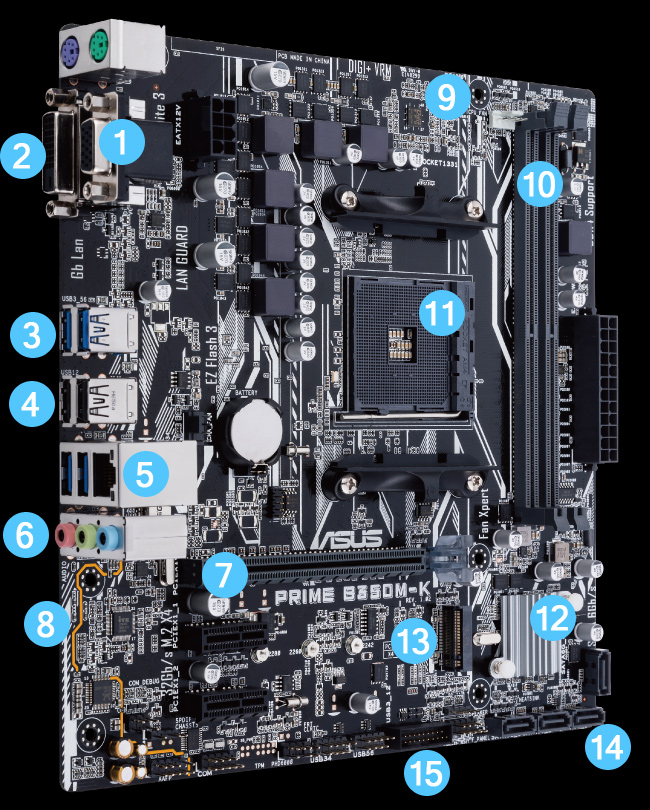 RAM with different frequencies can work together. At the same time, they will work at the frequency of the slowest RAM.
RAM with different frequencies can work together. At the same time, they will work at the frequency of the slowest RAM.
How to check RAM for errors
If you see irregularities in your computer and suspect that RAM may be the culprit, then simply check it for errors. This can be done in several ways.
Method 1: Using the standard Windows utility
- Type the word «tool» in the Start menu search bar and find the memory verification utility there.
We type in the search bar of the Start menu the word «tool»
- You will be prompted to restart the computer and start the scan. After that, the program starts scanning.
RAM scan after computer restart
- The F1 key can be used to change the test parameters. After the test is completed, the computer will restart. When you log in, you will be shown the result of the check. On the main ones, you will understand whether everything is in order with your RAM.
Method 2.
 Using Memtest86+
Using Memtest86+
Memtest86+ program
Memtest86+ is a free RAM error tester.
- You can download the program from the official website.
Download the program from the official website
- After you need to create a bootable flash drive with the Memtest86+ image. Let’s run the downloaded file. Next, select the drive from the list.
Select a drive from the list
- Click on the «Create» button.
Click on the «Create» button
After that, you need to wait a bit until the installation is completed. Now on your flash drive there is an image of the program.
- Enter the BIOS and set the boot mode from the storage device there.
In the «Boot» tab, set the bootable USB flash drive to the first place
- We restart the computer, the program will start automatically and start checking itself.
Memtest86+ RAM scan
- No further action is required from you. You just have to wait for the end of verification.
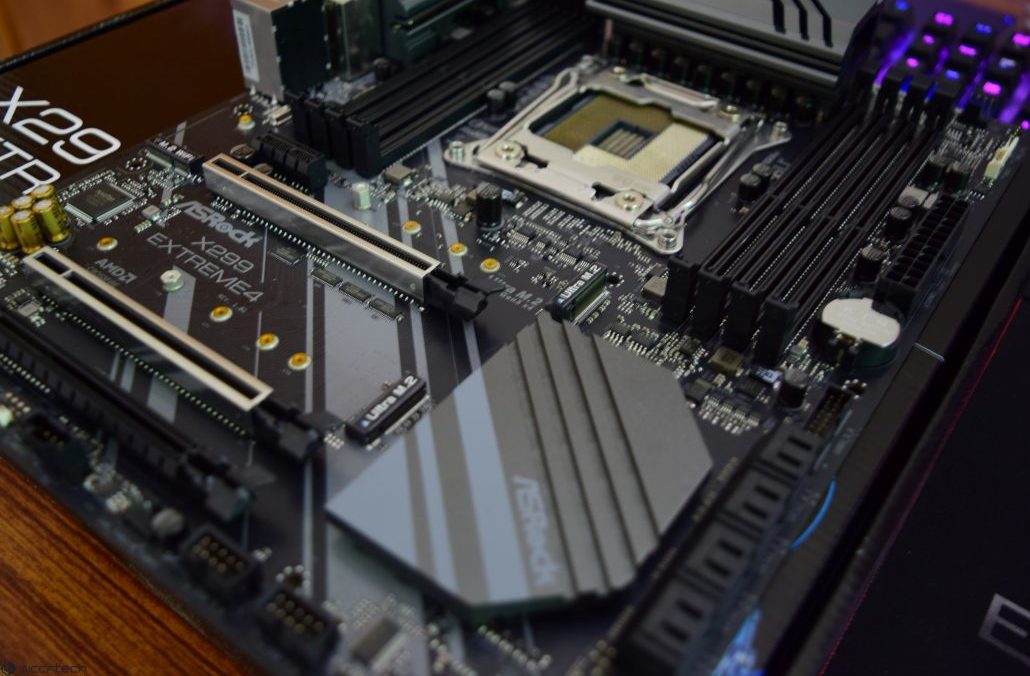 All errors will be highlighted in red, so you won’t be able to miss them.
All errors will be highlighted in red, so you won’t be able to miss them.
Errors highlighted in red
- Write down the error numbers, and later look on the Internet for what they mean. But unfortunately, if errors are found in your memory, then it is unlikely that it will already work correctly. The easiest solution to this problem is to buy new RAM. If you do not want to buy new RAM, then try cleaning the contacts with an eraser or even warming up the RAM in the oven. It is not recommended to do this, because the memory may fail. However, many solve the problem with RAM errors in this way.
Rewriting errors for further study via the Internet
Note! If you have several sticks of RAM installed, run the check for each of them one by one.
What to do if after installing a new RAM black screen
This problem has several obvious and non-obvious causes:
- The new RAM is not supported by the motherboard.
 If the RAM is in the slot, but the computer does not work fully, then most likely it is the frequency of the new memory. It is best to buy new memory at the same frequency as the old one.
If the RAM is in the slot, but the computer does not work fully, then most likely it is the frequency of the new memory. It is best to buy new memory at the same frequency as the old one.
We purchase RAM with the same frequency
- The cause of a non-working computer may be the wrong voltage that is supplied to the RAM. DDR 3 RAM has several voltage options. It is quite difficult to make a mistake with the choice, because low-power memory is designated with the letter L. That is, the memory will be designated as DDR3L.
Choosing the correct voltage for the RAM
- If you are sure that the memory is selected correctly, then you may have inserted it into an inoperative slot. The motherboard has at least two RAM slots. Try moving the bar to the next slot and turn on the computer. The connector may have been physically damaged.
We move the bar to the adjacent slot
- Carefully remove the plug from the socket and look at its pins. If they have black deposits, dust, dirt or other uncharacteristic growths, then carefully wipe the contacts with an eraser or a plain sheet of paper.
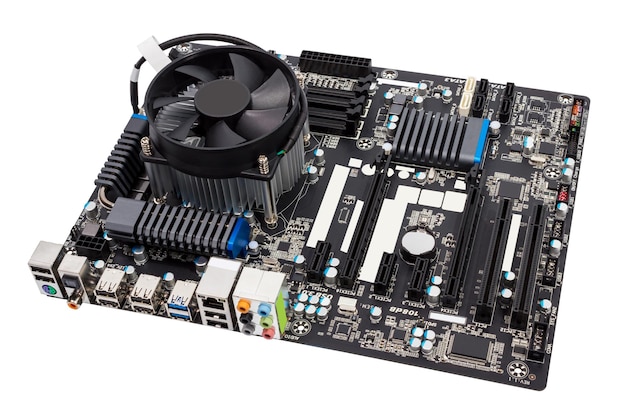 Many decide to wipe the contacts with alcohol. Be aware that before returning the RAM to the slot, you must completely dry the alcohol from the surface of the contacts. Otherwise, a short circuit may occur, which will completely ruin your computer.
Many decide to wipe the contacts with alcohol. Be aware that before returning the RAM to the slot, you must completely dry the alcohol from the surface of the contacts. Otherwise, a short circuit may occur, which will completely ruin your computer.
We clean the contacts with an eraser, remove dust accumulations
- If all else fails, then the memory is probably good, and the problem lies with the motherboard. To check this, you can insert the memory or MP into another computer, and check the performance there. If this is not possible, then remove all the RAM sticks from the computer and turn it on. If the computer starts beeping — the sound of the lack of RAM, then the MP is fully operational. If after turning on the computer there is complete silence, then most likely the motherboard is faulty.
Checking memory on another computer
Component Compatibility Test
Do not forget that for the correct operation of the computer, all components must be fully compatible.